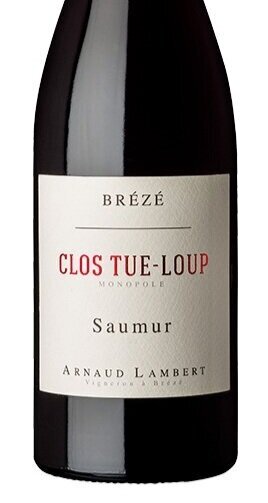Vine Path Blog 6/21: Arnaud Lambert
Arnaud Lambert
Vine Path Blog 6/21
Arnaud Lambert is the proprietor of one of the Loire Valley’s most exciting new wineries. Though his solo project is new, his history in Saumur runs deep. As a native son of the town of Breze in Saumur, Arnaud Lambert has a unique and deeply personal relationship to the wines of the region. That, along with his unparalleled winemaking pedigree, is what makes him a thrilling winemaker to watch. Uniquely, all the wines in the Domaine are bottled single parcel, but he takes this experiment in terroir one step further by subdividing each vineyard bottling by soil type. This makes the experience of tasting a horizontal of wines from Arnaud a singular experience that allows you to see just how impactful and important the geology of the vineyard site is. We’re excited to present to you four wines, all from the town of Breze, all made by Saumur’s native son.
The decomposing l
Arnaud Lambert Cremant de Loire
Yes, even Arnaud’s sparkling wine is from a single parcel. Planted in 1990 to a mix of Chenin Blanc and Chardonnay, this vineyard is situated on the decomposing chalky limestone that’s endemic in Saumur. The cepage here is 75/25 Chenin to Chardonnay. It spends 2 to 3 years sur lees before disgorgement and release. Bottled as a non-vintage wine, typical of sparkling wines made Methode Champenoise, the juice is mostly from the 2017 vintage. The parcel this wine is from is a special one, the Clos du Chateau, the oldest plot at Chateau du Breze, one of the most historic sites for winemaking and viticulture in Saumur. Arnaud was long the winemaker at this Domaine, helping renovate it back to it’s historic prestige before setting out on his own. Like any good sparkling wine made in this style, this wine is crisp, lean, racy, and yeasty, with potent, chalky mineral tones. An absolute stunner of a value for French sparkling wine.
DomaineArnaudLambertSaumurBlanc_ClosduMidi_MVSQ_1024x1024.png
Arnaud Lambert Clos de Midi 2019
In the Loire Valley it’s undisputed that Chenin Blanc is the greatest of the area’s white wines. Long overlooked by European wine drinkers (and winemakers!), Chenin today is experiencing a renaissance and consumers are slowly realizing what they’ve been missing out on all these years. Like Chardonnay, Chenin Blanc is an amazingly transparent vector for the expression of terroir. The fact that it’s a more neutral varietal helps make this transmission clearer yet. This parcel was planted in 1985 on the same soil type that the Cremant is planted to, so you’re bound to notice some striking similarities. To me, the chalky mineral notes are identical. This wine is aged in a mix of steel and large, neutral Burgundy barrels for 1 year prior to release.
Arnaud Lambert Clos Mazurique 2019
If Chenin Blanc is the greatest of the whites in the Loire, then Cabernet Franc is the greatest of the reds. This is an ancient varietal with a long history in Europe. Along with Sauvignon Blanc it’s the parent varietal to Cabernet Sauvignon, a relative newcomer to the world of viticulture. Like Pinot Noir, Chardonnay, Chenin, Nebbiolo, and Sangiovese, Cabernet Franc is a spectacularly variable grape that expresses itself in an amazing array of profiles. Compared to the Cabernet Franc of Bordeaux, the Loire’s expression tends to be more aromatic and lean with a greater focus on the freshness of the fruit, the savory earthiness of the terroir, and tends towards lower tannins and higher acidity. Clos Mazurique was planted in 1990 on a west facing slope (read, less sun exposure) directly onto the chalky bedrock. Aged entirely in concrete, this wine is intended to showcase the vibrant freshness that Cabernet Franc can showcase.
Arnaud Lambert Clos Tue Loup 2016
ARNAUD-LAMBERT-CLOS-TUE-LOUP_e06f7e973b00f392804690951cdc8bdd.png
This wine is a thrilling expression of what Cabernet Franc is capable of, made even more thrilling by the fact that this bottling has a bit of age on it. Planted in 1995 to a mix of clay and decomposing limestone, this Cabernet Franc is markedly different from the Clos Mazurique. For rocky soils, the stones will collect and radiate heat, which helps the grapes ripen faster and more fully. This means that the expression will tend towards brighter, fresher, riper profile with less vegetal notes. Conversely, clay soils store heat but won’t radiate it, meaning slower ripening and more pyrazines (the compounds responsible for green, vegetal notes) remaining in the grape by harvest time. Because of this, Clos Tue Loop has a darker, earthier, and meatier profile, with stronger savory elements, harder tannins, and a more… I want to say menacing, profile.
The old caves where Arnaud ages all of his wines.





